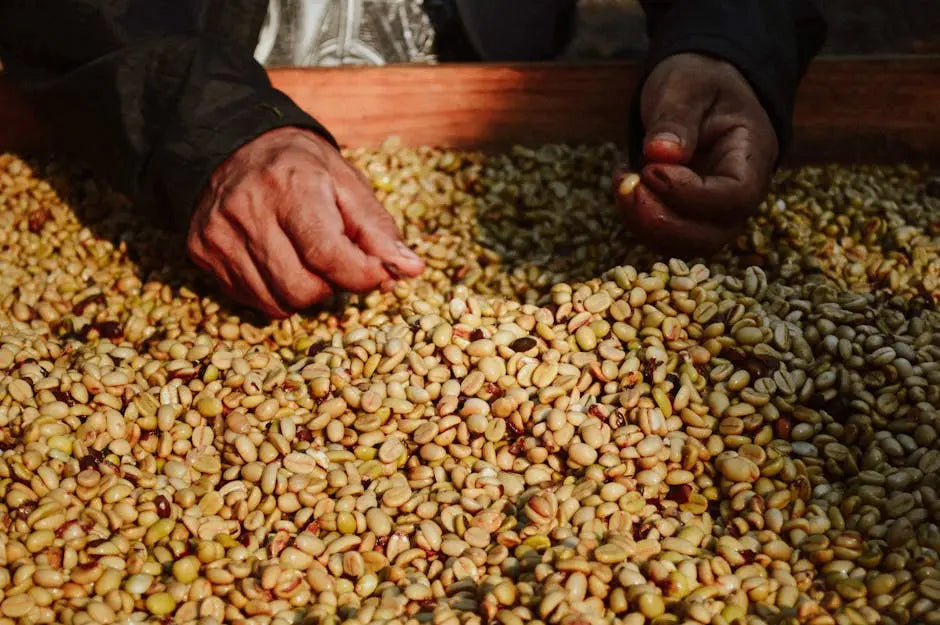Single origin coffee is a favorite among coffee enthusiasts, offering distinct flavors that reflect the region where the beans are grown. In this blog, we will explore what makes single origin coffee special, from its unique flavor profiles to its impact on coffee culture.
Understanding Single Origin Coffee
Single origin coffee refers to coffee sourced from a specific region, country, or even a single farm. This section will explain the definition and appeal of single origin coffees.
The term ‘single origin’ indicates that the beans are harvested from one particular location. This can create a strong connection between the drinker and the region, offering more than just a caffeine fix.
With a growing number of coffee enthusiasts seeking unique experiences, single origin coffee has gained immense popularity. As you sip on a cup, consider the journey those beans traveled to reach your cup, which adds layers to the enjoyment.
Backed by traceability, single origin coffees often highlight the growers’ stories. This means consumers can feel confident that their coffee not only tastes good but also supports the farmers behind its production.
Flavor Profiles of Single Origin Coffee
Every region produces coffee with distinct flavors. Here, we will delve into the taste characteristics associated with various coffee-growing regions.
For instance, Ethiopian coffee often features floral and fruity notes, marking it as one of the most renowned origins. In contrast, Colombian varieties are frequently recognized for their smooth and balanced characteristics.
Furthermore, coffee from Sumatra typically exhibits earthy and herbal tones. The diversity in flavor profiles is what makes exploring single origin coffee so exciting, as each cup offers a taste of its homeland.
Understanding these flavor profiles can enhance your coffee experience. Next time you enjoy a cup, think about how the beans’ origins influence the flavors swirling around your palate.
The Impact of Terroir
Terroir plays a significant role in coffee production. This section will discuss how soil, climate, and altitude contribute to the flavor of single origin coffee.
The concept of terroir, borrowed from wine-making, refers to how a specific location’s geography, climate, and soil composition affect the taste of the crop. In coffee, this means that even slight variations in these factors can lead to markedly different flavors.
Altitude is particularly crucial; beans grown at high elevations tend to ripen more slowly, allowing the flavors to develop more fully. Tropical climates paired with unique soils create a rich tapestry of flavors waiting to be discovered.
From the volcanic soils of Central America to the sunny hillsides of Africa, the diversity of terroir is a testament to the complexity of single origin coffee. Understanding this interplay can deepen one’s appreciation of the nuances in each brew.
Cultural Significance of Single Origin Coffee
Single origin coffee is often tied to the culture of its region. We will review how coffee traditions vary across different coffee-producing countries.
In countries like Brazil, coffee is deeply embedded in the fabric of daily life, often enjoyed in social settings. Meanwhile, in Italy, espresso culture dominates, showcasing a different aspect of coffee appreciation.
Moreover, coffee ceremonies in Ethiopia highlight the importance of coffee in social rituals, making each cup an experience that connects people and culture in a way few beverages can.
By choosing single origin coffee, you’re not just drinking a beverage; you’re participating in a global tradition that spans continents and cultures, fostering a deeper connection with the world at large.
How to Brew Single Origin Coffee
To truly appreciate the unique flavors of single origin coffee, brewing it properly is key. This section will provide tips on the best brewing methods.
One method to highlight those flavors is the pour-over technique. With this method, you can control water temperature and flow rate, allowing the nuances of the coffee to shine through.
If you’re looking for simplicity, a French press might be the way to go, producing a robust flavor profile and full-bodied coffee. However, experimenting with different methods—like Aeropress or espresso—can also yield delightful surprises.
Lastly, remember that freshness matters. Grinding your beans right before brewing can make a world of difference in unlocking the full potential of your single origin coffee. Enjoy the journey of finding your perfect brew!
Final Thoughts
In summary, single origin coffee offers a unique experience that showcases the diversity of flavors and traditions tied to specific regions. Whether you’re a seasoned coffee lover or new to the world of coffee, exploring single origin options can deepen your appreciation for this beloved beverage.


